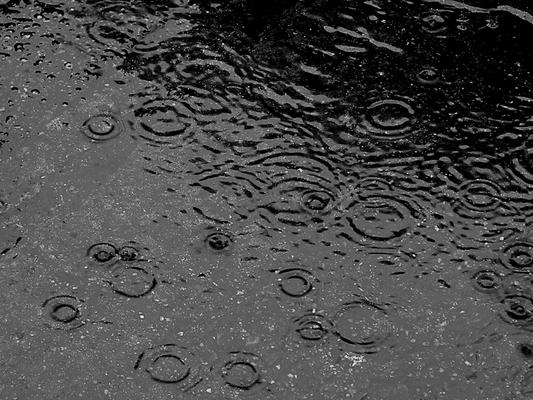
by Zahra Hirji Thursday, January 5, 2012

Wikimedia Commons
Predicting the weather has been central to human civilization since the Babylonians started studying cloud patterns in 650 B.C. The key to weather predictions is making correct assumptions. Today, instruments like Doppler radar that measure rainfall work under the assumption that raindrops fall at their terminal velocity. A new study, however, shows that some raindrops fall faster than they should, indicating rainfall instruments — and by extension, weather forecasts — may need some tweaking.
The maximum speed at which a raindrop falls from the sky is called its terminal velocity — the speed at which the upward pull of air drag and downward pull of gravity are in equilibrium so that a falling object is no longer accelerating. Because gravity is dependent on mass and air resistance is proportional to the cross-sectional area of an object, terminal velocity is dependent on a raindrop’s mass and size: Larger raindrops shouldfall faster than small raindrops.
Except when they don’t. While studying the dynamics of rainfall, Guillermo Montero-Martinez, a meteorologist at Universidad Nacional Autónoma de México in Mexico City, and his colleagues found that sometimes smaller raindrops fell faster than their terminal velocities.
These raindrops aren’t really breaking the rules of physics, however. The researchers discovered that when a large, or “parent,” raindrop fragments into multiple smaller, or “daughter,” raindrops as it falls, the daughters fall at their parent’s terminal velocity until they relax to their own slower terminal velocity. In fact, these smaller raindrops can move 10 times faster than expected, says Alexander Kostinski, a physicist at Michigan Tech University in Houghton and co-author of the study published in Geophysical Research Letters. The process is similar to when someone throws a bottle out of a moving train’s window, he says, where the speed of the bottle is initially the same as the train’s.
The team predicted that after a breakup, daughter raindrops (depending on size) would relax within just a fraction of a second, Kostinski says, but the measurements show they move at the faster speeds for much longer— a second or longer, equaling up to 10 meters in falling length.
This type of raindrop fragmentation is similar to a phenomenon that researchers have known about for decades: raindrop collisions in which smaller raindrops coalesce into one larger raindrop. In this study, the researchers found that a larger raindrop, due to coalescence, falls at a slower than expected velocity before speeding up to a faster terminal velocity that corresponds to its larger size. Kostinski thinks in both cases — collisions and fragmentations — raindrops get “agitated” and begin to oscillate. “Such oscillations, whatever the cause, are likely to lengthen relaxation times,” he says. Thus, the discovery of fragmentation indicates “rain is more agitated than we thought.”
If raindrop breakups are common, then this phenomenon and the influence of agitation should be incorporated into rainfall measurement instruments, says Dennis Lamb, a meteorology professor at Penn State University in University Park who was not involved in the study. Scientists rely on these instruments to collect the rain data they use to make weather and climate models.
Disdrometers, the most common instrument for measuring raindrop size and distribution, already measure rain fragmentation, but discount the data as erroneous, Montero-Martinez and his colleagues reported. Doppler radar infers raindrop size from drop velocity measurements and assumes raindrops fall at their terminal velocity. Thus, small raindrops falling faster than their terminal velocity are interpreted to be bigger raindrops, resulting in an overestimation of large raindrops and therefore total rainfall.
Warren Wiscombe, chief scientist of the Atmospheric Radiation Measurement program at NASA Goddard Space Flight Center in Greenbelt, Md., agrees that a high frequency of raindrop breakup should be accounted for in rainfall instrumentation. “It could be that this [phenomenon] has been staring us in the face for a long time, but we didn’t see it because we are prisoners of our assumptions, one of which is that falling drops quickly reach a steady state and stay there,” he says. “That assumption is deeply built into the processing for radar and disdrometers and perhaps other instruments.”
© 2008-2021. All rights reserved. Any copying, redistribution or retransmission of any of the contents of this service without the expressed written permission of the American Geosciences Institute is expressly prohibited. Click here for all copyright requests.